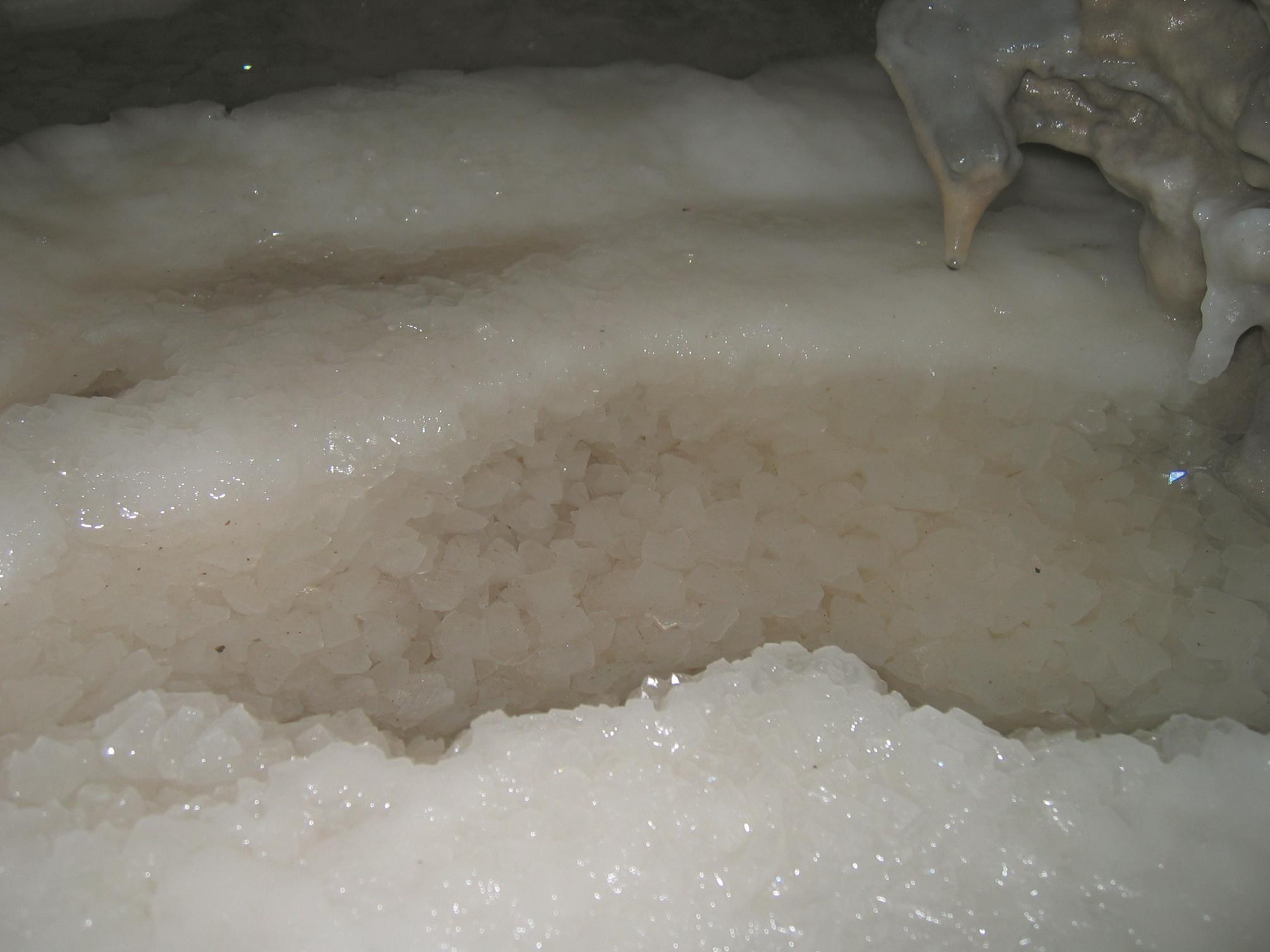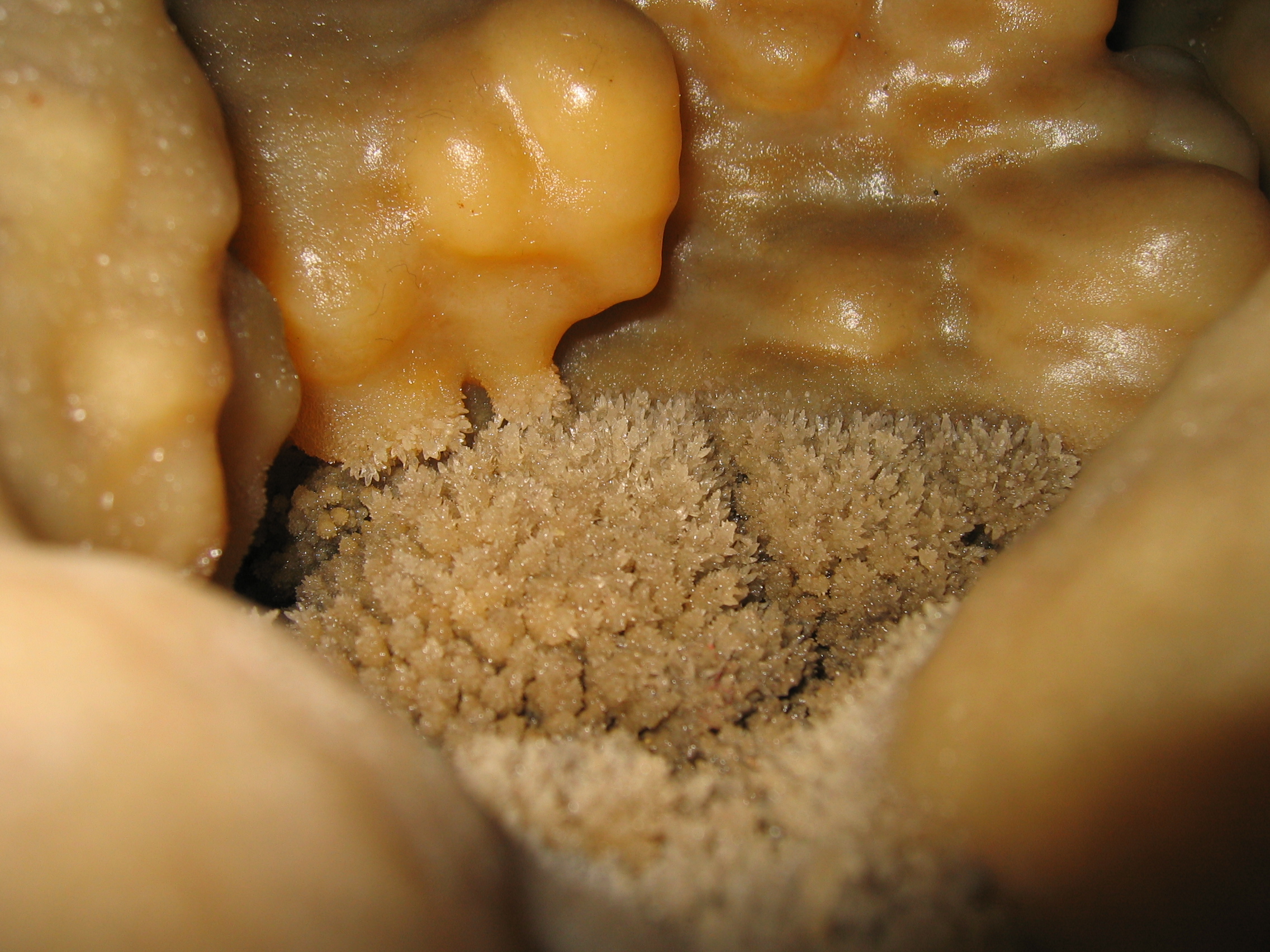
Growing Crystals in the Branch of the Three
In all the areas with many formations in the Grotta del Vento minute pools of motionless water can be seen which reflect like mirrors the surroundings below. Looking closely at them one can observe that while the formations which surround them have a smooth shiny surface, the bottom and the sides of these pools appear much rougher since they are completely covered by a bed of calcite crystals which can get to a few centimetres in size.

Growing Crystals and splash formations in the Pendant room
In some cases the pools are dry and the crystallization of the calcite, whose growth has stopped, is more evident. In the pools filled with water the crystals are still growing. The shape of the crystals is complex and varied and, although it is possible to distinguish different sides, the diamond shape can almost never be recognized which is the most common shape for this mineral. Big groups of scalenohedron calcite can distinctly be seen in a small pool in the Tunnel of Draperies.

Large Crystals in the Branch of the Three

The formation of the crystals is caused by the release from the surface of the water of carbon dioxide which disperses into the air of the cave. This determines the transformation of dissolved calcium bicarbonate into calcium carbonate, which crystallizes inside the pool coating the bottom and sides. The stiller the water, the more the crystals can grow with regularity assuming geometrical shapes and considerable dimensions. Where the water is moving, for example, from the dripping, the dimensions of the crystals are much smaller, such as in the pools which flank the Crystal Lake, where they appear as indistinct, dull, spongy grey masses.
The underwater calcite can coat in a relatively fast time any object that falls into the pools, such as fragments of stalactites, stones, or even coins dropped by visitors.
The colour can vary from translucent white to yellow to red. Some groups of crystals are characterized by a transparency that reminds that of quartz.







